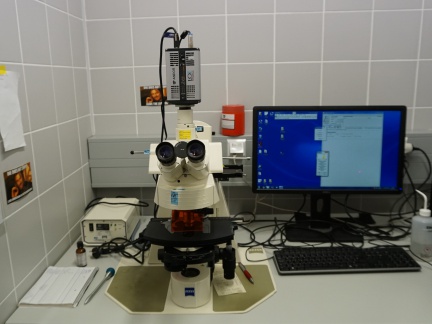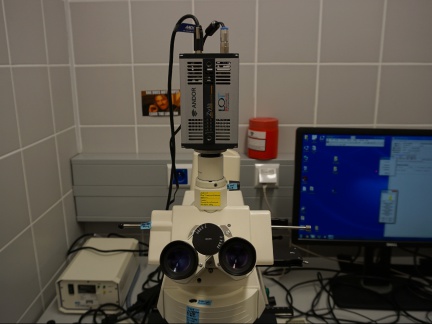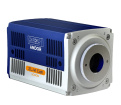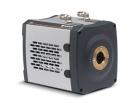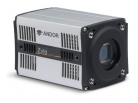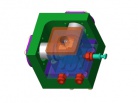At the Department of Cell Motility under the leadership of Dr. Varga(Institute of Molecular Genetics of the CAS), we replaced the older model of CCD (charge-coupled device) camera with the Andor camera Zyla 4.2 Plus, which is used for imaging weak signals and very fast events.
Dr Varga and his team are investigating cell motility and their main model organism is the protozoan Trypanosoma brucei. Here, they focus mainly on the architecture of the eukaryotic flagellum and its function. For imaging the building blocks (proteins) of the eukaryotic flagellum, they mainly use a fluorescence microscope with a CCD camera. They now plan to study flagellar movement, for which the existing CCD camera was insufficient.
Description of the new equipment:
The Andor sCMOS Zyla 4.2. Plus is an ideal instrument that, due to its high quantum efficiency (82%), allows the acquisition of low-intensity signals originating from the proteins that make up the eukaryotic flagellum. Thanks to its very high resolution (2048 x 2048 pixels), it is possible to use signal fusion from multiple pixels (binning) and thus increase the signal-to-noise ratio while maintaining sufficient image quality. In addition, due to the sensor architecture(sCMOS), this camera is suitable for capturing blinks in motion (see video), where it achieves up to 400 frames per second at 512 x 512 pixels.
Trypanosoma Video
Components
- Zyla 4.2 Plus USB 3.0
- Zeiss Axioplan 2
- MicroManager
Camera Comparison:
| sCMOS (Zyla) | CCD (older model) | |
|---|---|---|
| Resolution | 2048 x 2048 pixels | 1344 x 1024 |
|
Scanning speed (Full resolution) |
100 frames per second | 8 frames per second |
| Field of view size | 13.3 x 13.3 mm | 8.6 x 6.6 mm |
| Quantum efficiency | 82% | 70% |

